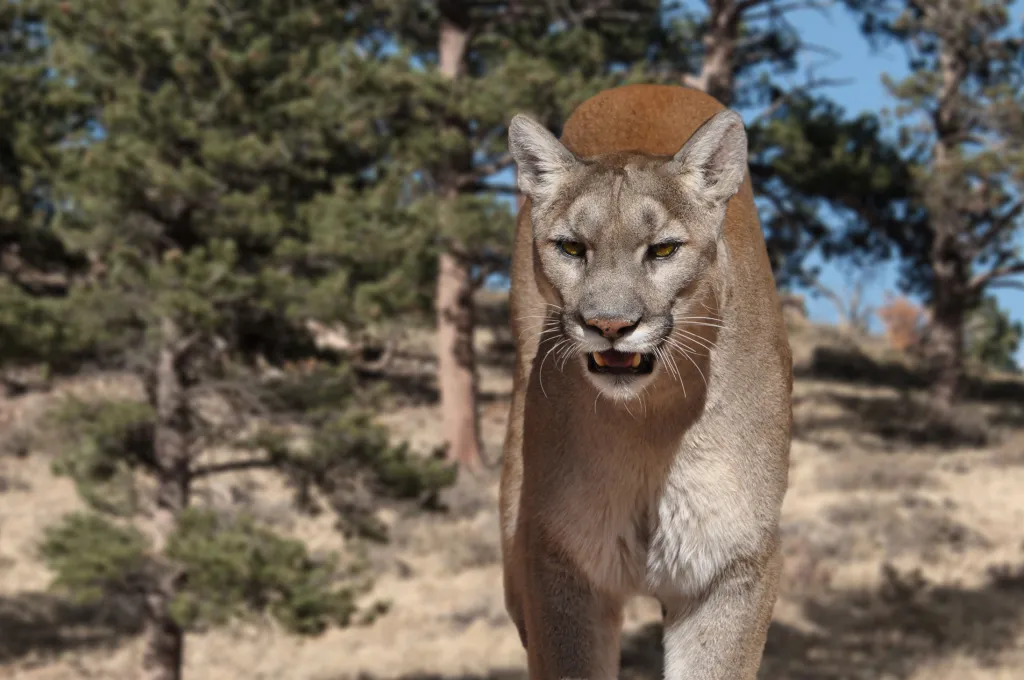An 11-year-old girl in Malibu, California, was injured when a mountain lion appeared outside a home and grabbed her arm. The child had been feeding chickens in a neighborhood near the Pacific Coast Highway on Sunday evening when the incident occurred, according to KTLA. Her family quickly took her to a nearby hospital, where she is now recovering, CBS News reported



What started as an ordinary Sunday evening in Malibu turned into a deeply unsettling moment for one family when their young daughter was unexpectedly injured by a mountain lion. The incident, which occurred near the Pacific Coast Highway in one of Southern California’s most recognizable coastal communities, has drawn significant attention—not only because of the rarity of such encounters, but also because of the broader questions it raises about how humans and wildlife can share increasingly crowded landscapes.
The Immediate Incident
According to local reports, the 11-year-old girl had been outside feeding chickens when the mountain lion emerged suddenly from nearby brush. Without warning, the large cat lunged and bit the child on her arm. Family members reacted instantly, rushing her to a nearby hospital for emergency treatment. Fortunately, officials later confirmed that the girl was recovering from her injuries and was expected to heal.
At first, the extent of her wounds and her overall condition were not publicly disclosed. This is typical in such cases, where families are granted privacy and medical professionals take time to assess the full scope of injuries.
Wildlife officials responded quickly. The California Department of Fish and Wildlife (CDFW) dispatched officers who tracked the mountain lion responsible. Within an hour of the 5:45 p.m. incident, authorities located and humanely euthanized the animal. DNA samples were collected both from the victim and the cougar to confirm that the same animal was involved, a standard procedure used to ensure accuracy before making final determinations about a wildlife encounter.
A Rare but Not Unprecedented Event
Although shocking, experts note that such incidents remain very rare. Mountain lions—also known as cougars, pumas, or panthers depending on the region—are secretive and typically avoid human contact. Attacks on people are so uncommon that each case tends to make national news.
Just weeks before the Malibu incident, however, a separate case occurred in Washington state. A 4-year-old child hiking with family members at Olympic National Park was also attacked by a cougar. That event, too, triggered renewed discussions about the delicate balance between preserving wild animals and ensuring human safety.
According to the National Park Service, mountain lions can weigh up to 150 pounds, with males generally larger than females. Despite their size and strength, they are among the most elusive animals in North America. They occupy wide territories, often covering many square miles, and rely on stealth and surprise when hunting deer and smaller prey.
Experts emphasize that human interactions are rare because cougars generally avoid areas with high levels of human activity. However, as urban development expands into previously wild spaces—and as animals search for food or water during times of environmental stress—occasional conflicts occur.
Safety Guidelines and Public Awareness
In the wake of the Malibu incident, wildlife officials have reiterated safety guidelines for anyone living near or visiting areas where cougars are known to roam. The most important steps include:
- Stay calm and don’t run. Running can trigger a chase response.
- Face the animal directly. Maintain eye contact and avoid turning your back.
- Appear larger. Raise your arms, open a jacket, or hold up objects to look more intimidating.
- Make noise. Yell, clap, or throw objects if necessary.
- Back away slowly. Give the animal space to retreat.
- Protect children and pets. Keep them close and under supervision in cougar territory.
These steps are widely shared across the western United States, where mountain lions still roam. Officials stress that while such guidance may sound alarming, the odds of needing to use it remain extremely low.
The Setting: Malibu’s Landscape and Wildlife
Malibu, famous for its ocean views, celebrity homes, and scenic Pacific Coast Highway, also sits on the edge of rugged wilderness. Beyond the beaches and luxury estates, steep hills and canyons connect to the Santa Monica Mountains National Recreation Area—a vast habitat for deer, coyotes, bobcats, and mountain lions.
This natural backdrop is part of Malibu’s charm but also explains why residents occasionally encounter wild animals. For decades, conservationists and community members have debated how best to preserve both the unique ecology of the region and the safety of those who call Malibu home.
Recent years have underscored how vulnerable the city can be to natural forces. In the winter prior to this incident, Malibu endured devastating wildfires that destroyed more than 700 structures and left scars across the hillsides. These fires not only displaced families but also disrupted habitats, driving wildlife into new areas in search of food and shelter.
Experts caution that changes in the environment—whether from wildfires, droughts, or urban growth—can alter animal behavior and increase the likelihood of encounters like the one experienced by the young girl.
Mountain Lions in California: A Broader Picture
California has long been home to mountain lions. Biologists estimate that between 4,000 and 6,000 cougars live across the state. While the population is considered stable overall, individual groups face challenges such as habitat fragmentation, vehicle collisions, and conflicts with humans.
One of the most famous examples of a California cougar was P-22, the so-called “Hollywood Cat,” who lived for years in Griffith Park near Los Angeles. His story captivated the public and highlighted both the adaptability of mountain lions and the risks they face in urbanized areas. P-22 was frequently photographed near the Hollywood sign and even in residential neighborhoods, becoming a symbol of coexistence between humans and wildlife.
Unfortunately, P-22’s later years were marked by illness and injury, leading to his euthanasia in 2022. His legacy lives on in efforts to build wildlife crossings—such as the Wallis Annenberg Wildlife Crossing over the 101 Freeway—to help mountain lions and other species travel safely between habitats.
Human–Wildlife Balance
The Malibu case has reignited conversations about how humans and animals can safely share space. For many, the presence of mountain lions is a reminder that Southern California’s beauty comes with responsibilities. Homeowners are encouraged to secure pets, protect livestock like chickens and goats, and avoid leaving food outside that might attract wild animals.
Community groups and conservation organizations also use such moments to educate the public about the ecological role of predators. Mountain lions help regulate deer populations, which in turn supports healthier ecosystems. Removing cougars entirely, scientists warn, could create new problems by upsetting this balance.
Emotional and Community Impact
For the family involved, the incident was undoubtedly frightening. Community members expressed relief that the girl is recovering and praised the quick response of both her relatives and wildlife officials.
Still, the event has stirred unease. Parents in Malibu neighborhoods are discussing safety precautions, while others are reflecting on how close-to-home nature can sometimes feel unpredictable. Conversations at schools, community meetings, and online forums have ranged from expressions of sympathy to debates over whether more should be done to prevent future encounters.
Lessons Moving Forward
This incident, like others before it, offers an opportunity for reflection. Some of the key lessons highlighted by experts and community leaders include:
- Preparedness matters. Families living near wild areas should review safety guidelines with children.
- Wildlife deserves respect. Understanding the natural behaviors of animals reduces fear and helps people make informed choices.
- Environmental changes have ripple effects. Wildfires, droughts, and urban expansion all influence animal movements.
- Coexistence is possible. Through education, responsible behavior, and conservation planning, people and predators can share space with minimal conflict.
Malibu’s Resilience
Malibu is no stranger to challenges, from devastating fires to coastal storms. The community has always shown resilience, coming together to rebuild homes, support neighbors, and advocate for environmental stewardship.
This mountain lion encounter, while alarming, also serves as a reminder of the wild beauty that surrounds Malibu. The same landscapes that attract hikers, surfers, and filmmakers are home to ancient ecosystems that predate human settlement.
By fostering awareness and respect, Malibu can continue to thrive as both a human community and a natural sanctuary.
Conclusion
The mountain lion incident in Malibu has captured headlines, but beyond the immediate story lies a much larger conversation. It is about how we live alongside wildlife, how communities adapt to changing environments, and how people balance safety with respect for nature.
For the young girl and her family, the ordeal was deeply personal, but her recovery brings hope and relief. For the city of Malibu and beyond, the episode is both a cautionary tale and an opportunity: a chance to learn, prepare, and ensure that humans and wild animals can coexist in ways that honor the safety of both.



